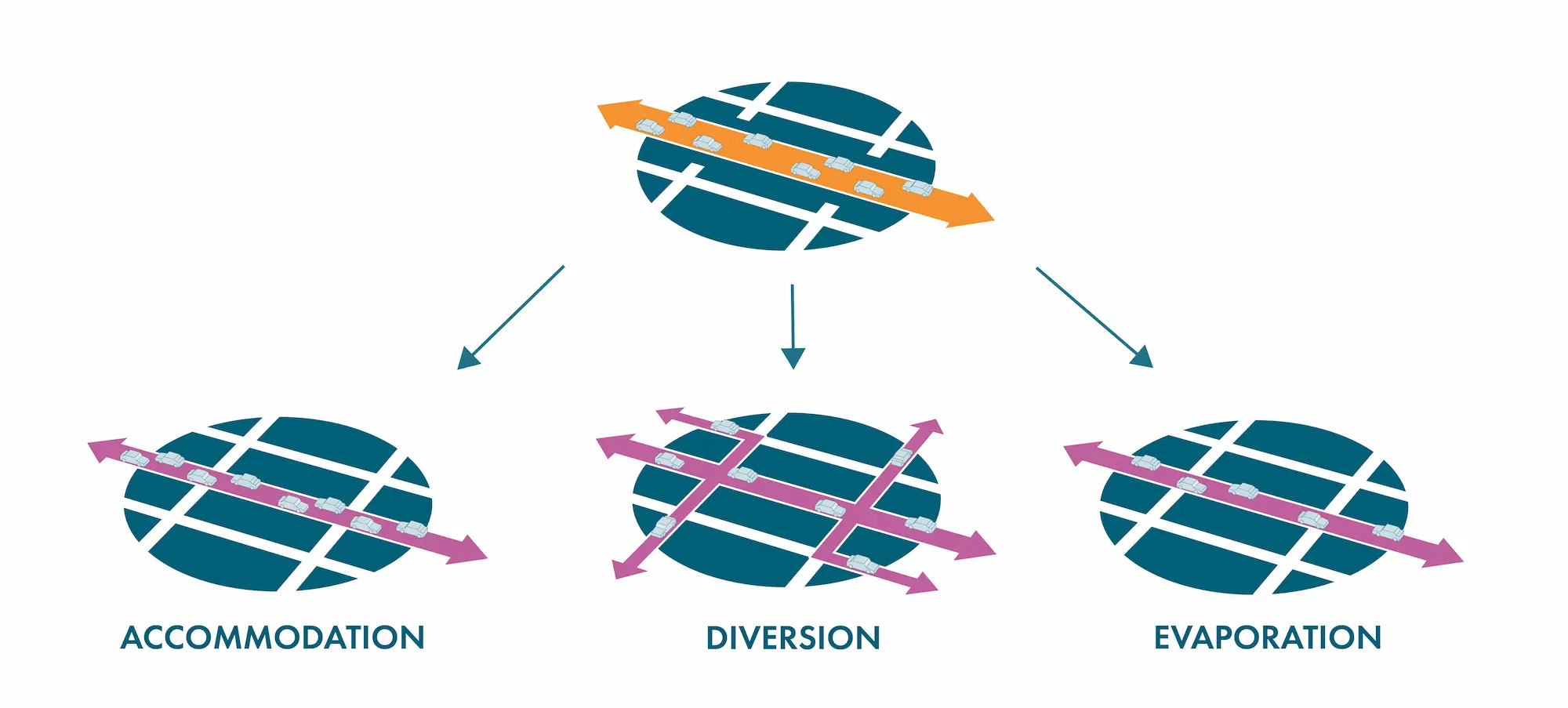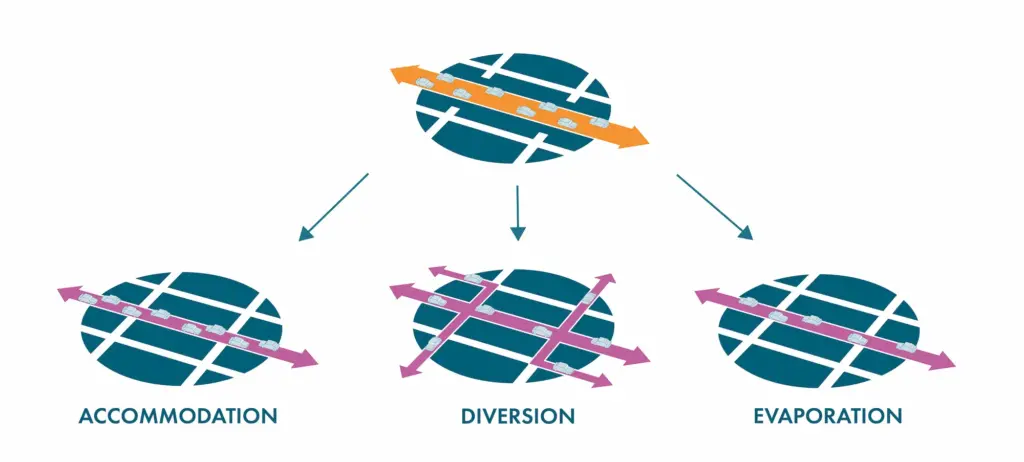
Successful highway removal requires a network solution. Streets or boulevards that replace the highway will not provide the same vehicle throughput, but with improved street connectivity and multimodal infrastructure, people will quickly adapt to the new network. Changes in infrastructure will lead motorists to change their habits, such as taking a different route, traveling at different times, or choosing a different destination. The trips made on I-94 today will fall into accommodation, diversion, or evaporation.

Accommodation
Traffic can be accommodated with a multimodal boulevard and well-connected street network that provides efficient, direct routing of trips. The design of the boulevard matters – a four-lane roadway will carry more cars than the two-lane option. A multiway boulevard, with separate through lanes and access lanes, provides even more capacity. However, scaling up a roadway does not increase vehicle capacity proportionately, as larger roads are much less efficient. Moreover, scaling up the roadway has disastrous impacts on road safety and walkability.
A transitway operated on the I-94 corridor can serve many person-trips that are currently made on I-94. High-quality bike infrastructure will encourage mode shift for the many short trips within the study area. Rapid adoption of electric bicycles is changing mode choice for many who do not now consider traveling by bike. New housing and businesses within the project corridor would encourage walking and biking. Working from home provides greater flexibility in when and where people travel.
Diversion
It is not necessary to supply equal vehicle throughput capacity on the boulevard as traffic will disperse to other parallel routes, and trip making will change in response to changes in the transportation infrastructure. Many motorists making local trips currently go out of their way to hop on and off I-94 as part of a short trip, even when more direct routes on local streets are available. Following a highway removal, these trips will use more direct routes on the reconnected local street network.
Many parallel corridors to I-94 are significantly underutilized during peak hours and can absorb additional traffic without widening while maintaining slow, safe speeds.
Evaporation
Traffic evaporation, sometimes called “reduced demand,” describes how traffic is reduced on roadways in which space is reallocated to non-automobile modes, such as walking, biking and transit. When roadway capacity is reduced, drivers change their behavior so that traffic volumes actually go down. In some instances, traffic volumes are reduced by “efficiencies,” such as traffic signal synchronization. Most often, however, it is individual driver behavior, made by hundreds or thousands of drivers, that changes.
Adding extra capacity to a network may reduce overall performance and increase travel times. As in a game structure, if drivers have the possibility to choose their own route autonomously they will behave selfishly. This means that each driver will aim at improving its respective travel time by arriving first: all drivers will take the new “fast” road and will thus cause congestion.
Braess Paradox
Any proposals to increase or reduce capacity on I-94 should be evaluated in a manner that considers the Braess paradox. What the Braess paradox suggests is not that a network solution is not the answer but rather that people act in their self-interest. When a road, such as a highway, appears to be the fastest route, many drivers will choose this one route, making traffic in the whole system less efficient. This is what happens during rush hour traffic commutes and why highways often fail to live up to their purported ideals.
Join us in contacting decision-makers.
Take action by emailing key decision makers and standing up for reparative justice.